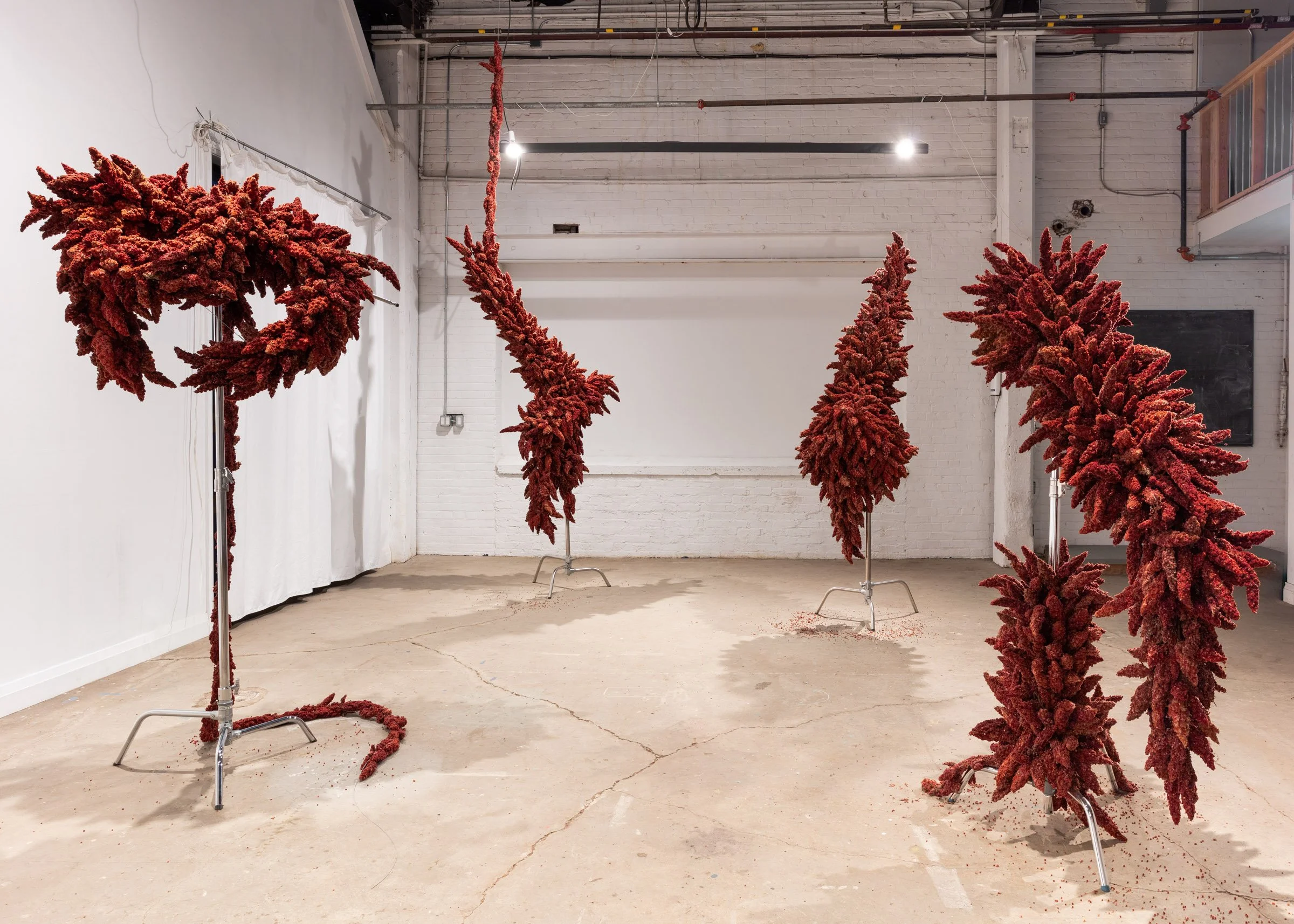Volume VII, October 1 - 15, 2025
Jaime McCuaig
While languishing in a parade of cars creeping along the Don Valley Parkway, you might notice furry red fingers reaching out from the vegetation lining the roads. It’s late September, and the smell of a delicious rot is in the air. Some may recognize the fingers as staghorn sumac, a plant indigenous to southeastern Canada, whose tendency to thrive in environmental margins like dump yards and roadside ditches often relegates it to the status of weed: unwanted and disregarded. Yet staghorn sumac is quietly revegetating damaged land. Where heavy civil infrastructure has altered or degraded the ground, plants like sumac are at the forefront of ecological adaptation, rehabilitation, and succession.
For Volume VII, Jaime McCuiag considers the tension between containment and interdependence at the boundary between manufactured and natural landscapes. Installed along an active Canadian Pacific Rail corridor in Toronto, the work is positioned within a zone shaped by human extraction. The gallery, once one of the first industrial warehouses in the area, sits beside the railway, an infrastructural vein that has long directed patterns of industrial expansion and working-class settlement. Railroads often foreground urban development while simultaneously producing its edges. This dual role as both centre and periphery mirrors the behaviour of staghorn sumac, which takes root in the neglected zones left behind by human intervention. McCuaig is drawn to plants that grow in abundance yet go unnoticed. “Sumac is often amongst the first wave of plants to take over an empty piece of land,” she tells me. Once they take root, they allow for many other species to grow because they protect the site. And, owing to their rhizomatic root system, sumac proliferates, enduring harsh conditions to rejuvenate environmental margins. The work dwells in this overlap, where ecological vitality emerges in response to infrastructural disruption.
Over the past several weeks, Jaime and a small team of foragers have travelled to dozens of sites in Southern Ontario, from Northern Frontenac to Huron County, in search of sumac. Gathering the fuzzy plant in great swathes, she began to sculpt the drupes around various armatures in her studio. During the making process, Jaime found spiders and praying mantises nesting within the sumac, small signs of the plant’s ongoing life and its capacity to host other entities. The clusters, harvested in a range of hues, shapes, and sizes, resisted her control, increasingly tending toward animal-like forms. This resistance, and the resulting negotiation between artist and material, underpins the exhibition. By working with overlooked or transitional ecologies, the installation prods at hierarchies of value in both landscape and art historical culture, foregrounding growth, transformation, and decay as welcome collaborators.
Documentation by LF Documentation

















